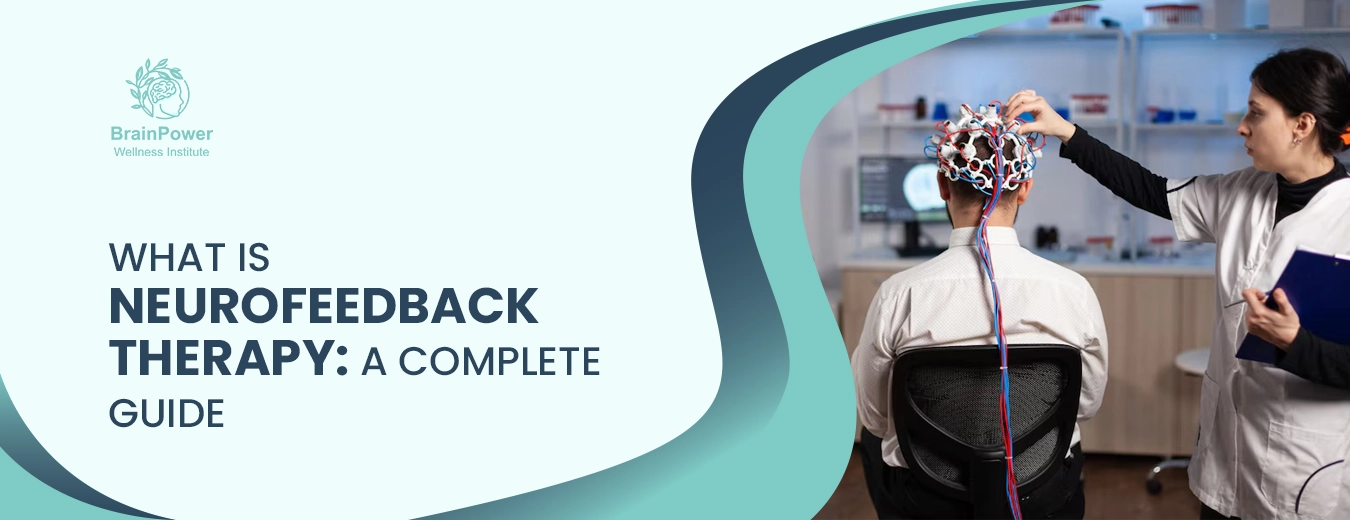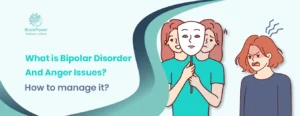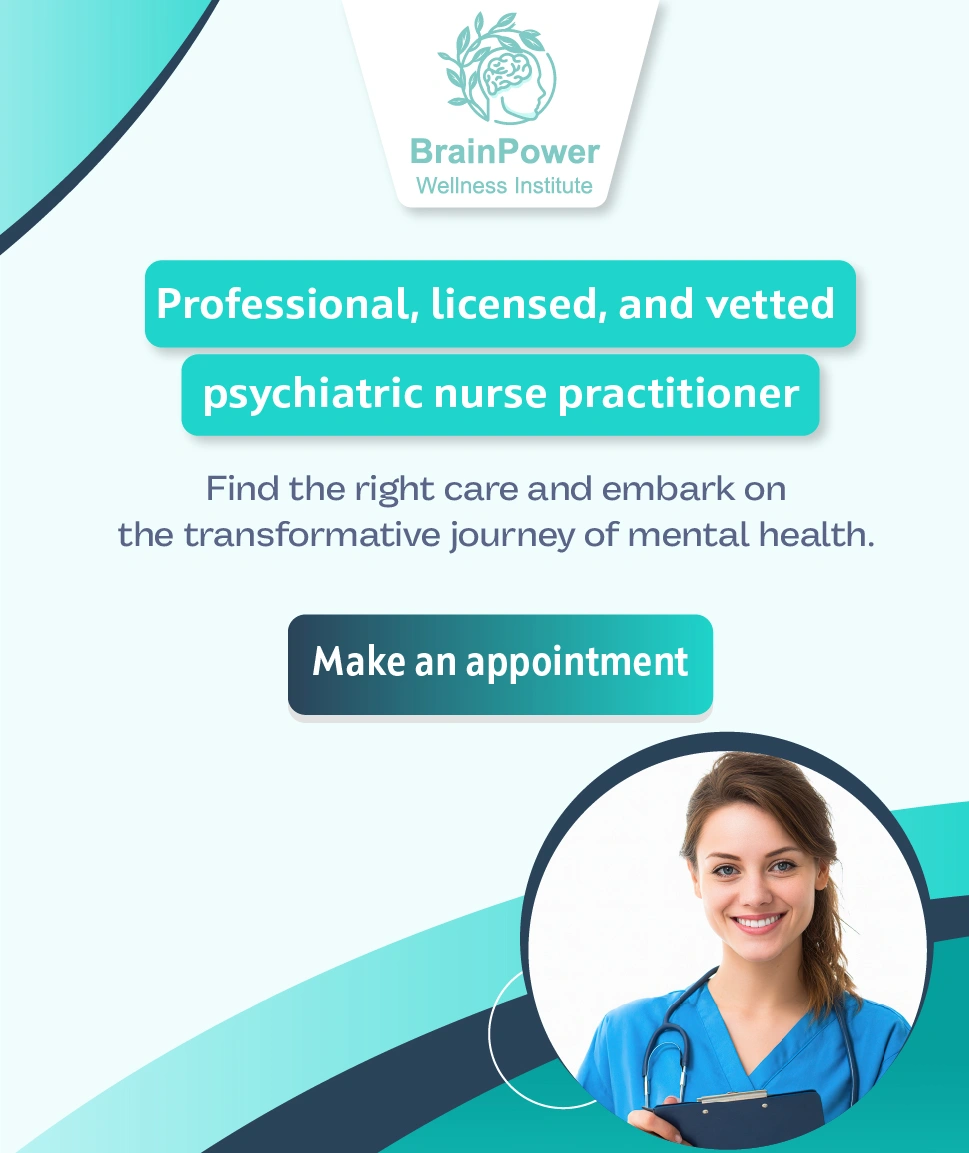Are you suffering from common mental illnesses? Are you about to undergo neurofeedback therapy but desire to learn more about it before that? If so, you are on the right platform. Neurofeedback therapy is one therapeutic approach used in clinical neurophysiology. It is mainly devoted to treating the central nervous system, as most conditions addressed during treatment are associated with brain and cognitive disorders. Moreover, the autonomic nervous system (ANS) typically deals with digestion, heart rate, and blood circulation functions.
This article provides a complete understanding of neurofeedback, how it works, the types of neurofeedback treatment, the significant neurofeedback benefits,
What is a brain wave?
The brain generates electrical activities and impulses in human bodies, usually called brain waves. These brain waves are highly involved in regulating our thinking and actions, our ability to pay attention, and our body functions. Additionally, any changes in the frequency of brain waves can drastically affect mental well-being. Each brain wave has two properties:
The frequency of a brain wave shows how fast it can travel.
Amplitude means the ups and downs phase and how tall a wave can get during this phase.
Generally, high frequency is associated with focus, thoughts, and consciousness, while low frequency is associated with rest, meditation, and sleeping.
What are the common types of Neurofeedback treatment?
Neurofeedback is an umbrella term that comprises different types of EEG biofeedback systems. The various types differ regarding the kind of brain waves being trained. The primary aim is to help the patient focus better, learn better, sleep better, or reduce anxiety/PTSD.
The most common types of neurofeedback are:
Amplitude training:
This is the primary and still most commonly used technique. It involves elevating or diminishing the magnitude of specific brain waves.
Slow cortical training (ILF, ISF, and SCP):
This method stimulates the slowest waves within the brain, which is helpful for emotionally charged situations and maintains brain stability.
Z-score training:
This approach focuses on stimulating the activity in a patient’s brain waves to the average of the most ordinary individuals.
How Does Neurofeedback Work?
A typical neurofeedback session follows these basic steps:
Setting goals for treatment:
It is important to note that goals are developed by considering the patient’s condition and the nature of the neurofeedback system. For instance, the purpose of anxiety therapy is to control the fast brain wave activity to ensure that the sufferer feels calm and relaxed.
Measuring of brain wave activity:
A clinician first attaches electrodes to a patient’s scalp to simultaneously record the brain’s electrical activity (EEG). After the set-up, the patient can watch a movie, play a video game, or listen to music as neurofeedback training starts.
Training of the brain with positive feedback:
When the EEG determines that the patient’s brain wave activity is now at the targeted goals for the treatment, the brain is then appreciated with positive reinforcement. For instance, a patient suffering from anxiety will get a bigger screen for the movie, a higher score on the game, or good sounds played out when his brain produces more alphas and fewer fast beta waves.
Repeat training:
The EEG then tracks the patient’s brain’s positive feedback and provides affirmative reinforcement when treatment objectives are achieved. This training loop gives the brain thousands of chances to self-correct and self-reward in a single session.
Positive feedback training is rooted in the theory of learning, or operant conditioning. It is similar to dog training, where you learn a new skill with the help of rewards or treats. Our brains also act in the same manner, and they constantly seek rewards.
What can it treat?
Neurofeedback therapy has shown significant improvement in treating common mental disorders such as ADHD, anxiety, depression, autism spectrum disorder, insomnia, drug addiction, learning disabilities, and schizophrenia.
Additionally, this therapy aids sufferers in regaining lost control over their lives. Furthermore, it acts as a long-term symptom improver without the undesirable side effects linked with the prescribed medications.
Another prominent benefit of neurofeedback therapy is that it is drug-free, meaning it shows no side effects, unlike various medications.
What are the benefits of Neurofeedback Therapy?
The primary advantage of neurofeedback therapy is the ability to show the brain’s functioning. This can show responses to things you were not even aware of, which could help locate unhelpful patterns and aid in altering them into pleasant behaviors.
Yet another advantage of neurofeedback therapy is that it instantly presents your brain’s reactions. This allows you to comprehend your reactions better and view them with a neutral perspective. This is especially ideal for individuals who have anger issues because such people are usually sensitive and quick to react to situations.
Can children use neurofeedback safely?
Neurofeedback therapy has shown positive effects on children and adolescents with the following psychiatric illnesses:
- ADD, ADHD, OCD, and autism spectrum disorders
- Learning disabilities
- Physical disabilities
- Sleep disorders
- Self-control
- Post-traumatic stress disorders,
- Anxiety disorders
- Emotional regulation
Nerofeedback’s advantages in children include improved cortical functioning, learning self-regulation skills, and the development of a constant attention span. Moreover, a mental health provider who treats children needs to be chosen with caution. However, neurofeedback treatment should be administered carefully on children with severe behavioral issues as it may not be the most suitable treatment for every child.
What common mental health disorders can be treated with Neurofeedback therapy?
Neurofeedback treatment is suitable for treating many mental health disorders leading to abnormal brain functioning.
ADD & ADHD:
Concentration and focus are significant challenges for people with ADD and ADHD. This happens due to dysregulation in levels of particular brain regions responsible for sustained focus and concentration. Neurofeedback helps the sufferers regulate their brainwave patterns, which lowers and, in some cases, successfully eliminates the signs associated with ADD and ADHD.
Depression:
A depressed person may experience dysregulation in the brain, which leads to misinterpretation of reality. As an outcome, sufferers become captivated about what’s wrong in their lives and find themselves caught in a negative constant loop of thoughts. Neurofeedback helps the sufferers learn how to work through these thinking patterns by modifying the brainwaves into desirable thoughts.
Anxiety:
Anxiety is one of the most commonly experienced mental illnesses. It affects a person by developing overwhelming fear, lack of sleep, and unhealthy eating habits.
Neurofeedback proves to be the most suitable treatment method for anxiety as it reduces and eliminates the signs of anxiety. Moreover, this method helps the sufferer learn about the ongoing brain moments whenever anxiety hits them.
Panic Disorder:
Panic attacks are typically caused due to severe or untreated anxiety disorders.
Neurofeedback treatment helps the sufferer with a real-time view of how their brain responds to the environment.
Neurofeedback gives patients a real-time look at how their brain responds to stressors. It also allows sufferers to feel relaxed and prevents their brain from triggering the “fight or flight” response that leads to panic attacks.
Last Thoughts!
Neurofeedback therapy is a technique that involves training the brain waves, hence making it effective in ailments of the brain and cognition. This therapy aims to assess the brain waves in individuals since these waves influence the thinking processes, movements, and emotions of a human being. The therapy is attained by utilizing EEG to read the brain waves and rewarding the patients when the right brain wave is achieved. Such a process assists patients intending to improve concentration, eliminate anxiety, and treat diseases like ADHD, depression, and insomnia. This therapy is also effective for children with different psychiatric and developmental disturbances. However, it is vital to choose an experienced mental health professional to implement this method to gain the maximum benefits.
Therefore, Brainpower Wellness Institute is an ideal choice for you to overcome your mental health issues with the help of our effective neurofeedback therapy. Our exceptional team of mental health providers is always ready to assist you with your concerns. So, wait no more, and contact us to achieve the desired mental stability.




